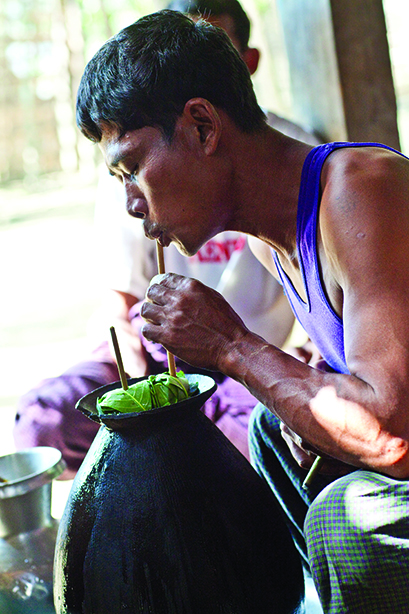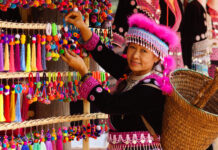This source of income is so important, households keep their secret recipes closely guarded
Text by Alex Bescoby
Myanmar, despite the Buddha’s encouragement to abstain from intoxicating substances, is home to a dizzying array of homemade alcohol. Apart from the ubiquitous national staple, Myanmar Beer, many rural communities are manufacturing their own do-it-yourself rice wine brews using spare rice and millet. The final product’s shelf life of just a few days means there’s always a batch being fermented and drunk somewhere. Whether out of bottles, cups or a pot with bamboo straws, this cultural beverage has been the country’s drink of choice for years.
Related: The Daily Grind
In Myitkyina, the state capital of Kachin – Myanmar’s northernmost subdivision in the Himalayan foothills – thriving micro-distilleries hum with life behind almost every home. Manned by women, huge cauldrons of white rice are steamed over smouldering log fires, then fed into a rickety system of sealed metal pots and bamboo tubes, within which the fermentation happens over four to five hours. Recipes vary from house to house, and are fiercely guarded; from them streams a precious source of secondary income for the family. Potential buyers are faced with dozens of different brew-strengths on offer, but Kachin rice wine, called sapee – a thick pink liquid that looks and tastes like a fruit smoothie – is always a popular pick.
Related: The Sweet Starch of Success
To the locals, the drink is a cure-all elixir that replenishes strength. Indeed, researchers claim rice wine’s probiotic properties impart amino acids, minerals and antioxidants to the body, and lower the chances of cancer. The grog is also known to aid digestion, improve metabolism, and pair well with local river snails cooked in garlic.
Related: Word on the Street
For more stories and photographs from this issue, see Asian Geographic Issue 130, 2018











